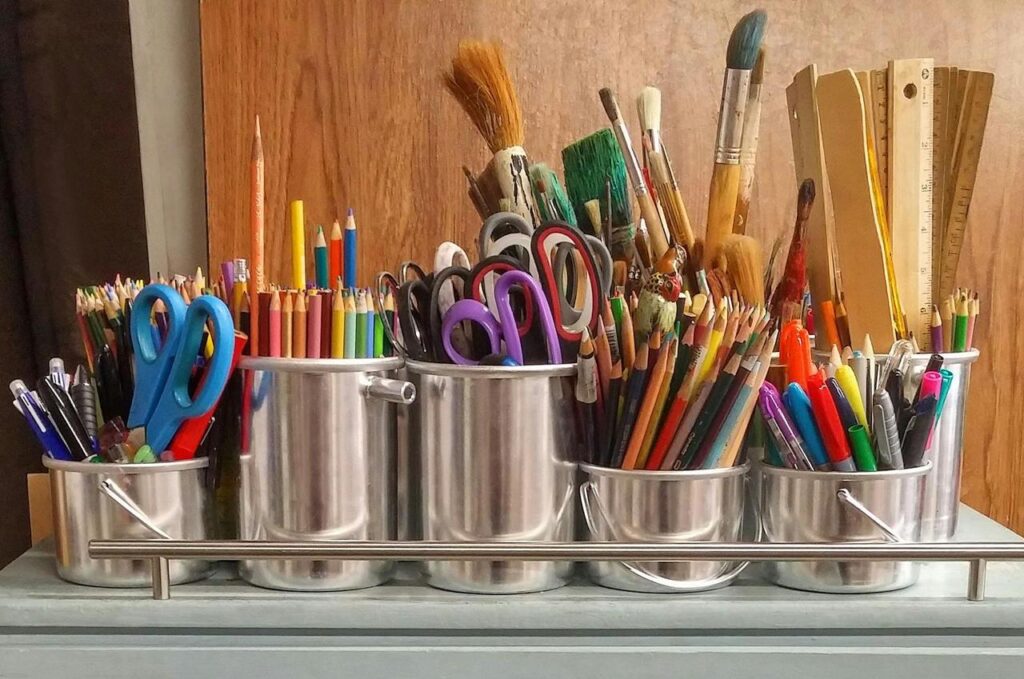Understanding the characteristics and techniques of different types of paints is essential for achieving desired results in arts and crafts projects. Each type of paint offers unique properties, such as opacity, texture, drying time, and application methods. Whether you’re working on canvas, wood, paper, or other surfaces, choosing the right paint type can significantly impact the outcome of your artwork. This guide explores various kinds of paints commonly used in artistic and DIY projects, providing insights into their features, applications, and best practices.
1. Acrylic Paint
Acrylic paint is a versatile medium in the realm of artistry, offering artists a wide range of applications and techniques. One notable variant is pearlescent paint, which adds a luminous and iridescent quality to acrylic artworks, enhancing their visual appeal. Artists often use paint to create subtle shimmering effects or to highlight specific details, adding depth and dimension to their compositions. The flexibility of acrylic paint allows for blending, layering, and mixing with other mediums, making it suitable for various styles, from abstract to realistic. Moreover, pearlescent acrylics can be applied to multiple surfaces, including canvas, wood, and even ceramics, providing artists with creative freedom to explore and innovate with color and texture in their artistic endeavors.
2. Oil Paint
Oil paint is known for its rich colors, slow drying time, and blendability, making it a preferred choice for many artists. It consists of pigments suspended in drying oils such as linseed oil or walnut oil. Oil paints allow for smooth blending and layering, making them ideal for creating nuanced textures and details. They are typically applied with brushes and palette knives on canvas or wood panels. Oil paints require turpentine or mineral spirits for thinning and cleaning brushes, as they are not water-soluble. Allow sufficient drying time between layers to prevent cracking and ensure proper adhesion.
3. Watercolor Paint
Watercolor paint is renowned for its transparency and luminosity, achieved by using pigments suspended in a water-soluble binder. It is applied with brushes onto paper specially designed for watercolor painting. Watercolors are known for their ability to create delicate washes and subtle gradients, making them ideal for landscapes, portraits, and botanical illustrations. Techniques such as wet-on-wet, wet-on-dry, and dry brushing allow for a range of effects from soft and ethereal to bold and textured. Control over water dilution is key to achieving the desired transparency and intensity of colors in watercolor painting.
4. Gouache Paint
Gouache paint is similar to watercolor but offers greater opacity and matte finish, making it suitable for opaque painting techniques. It consists of pigments mixed with a gum Arabic binder, similar to traditional watercolors. Gouache paints can be applied thickly or diluted with water to achieve varying levels of opacity and transparency. They are often used for illustrations, design work, and decorative arts on paper and illustration boards. Unlike watercolor, gouache can be layered without the risk of lifting previous layers when reactivated with water. Use synthetic brushes designed for gouache to achieve smooth and consistent application.
5. Spray Paint
Spray paint is a versatile and quick-drying paint applied from aerosol cans, known for its ease of use and ability to cover large areas evenly. It is commonly used for graffiti art, street art, and DIY projects on surfaces like metal, plastic, wood, and concrete. Spray paint comes in various finishes, including matte, glossy, and metallic, offering flexibility in achieving different visual effects. Shake the can thoroughly before use and apply in well-ventilated areas or outdoors to avoid inhalation of fumes. Maintain a consistent distance and speed while spraying to achieve uniform coverage and prevent drips or uneven application.
Conclusion
In conclusion, mastering the use of different kinds of paints opens up a world of creative possibilities in art and DIY projects. Whether you prefer the versatility of acrylics, the richness of oils, the transparency of watercolors, the opacity of gouache, or the convenience of spray paint, each type offers unique characteristics that influence the artistic process and outcome. Understanding the properties, applications, and techniques associated with each paint type allows artists and crafters to explore and experiment with diverse mediums. By choosing the right paint for your project and employing appropriate techniques, you can achieve stunning results that showcase your creativity and skill. Embrace the diversity of paints available and continue to refine your painting techniques to enhance your artistic expression.



